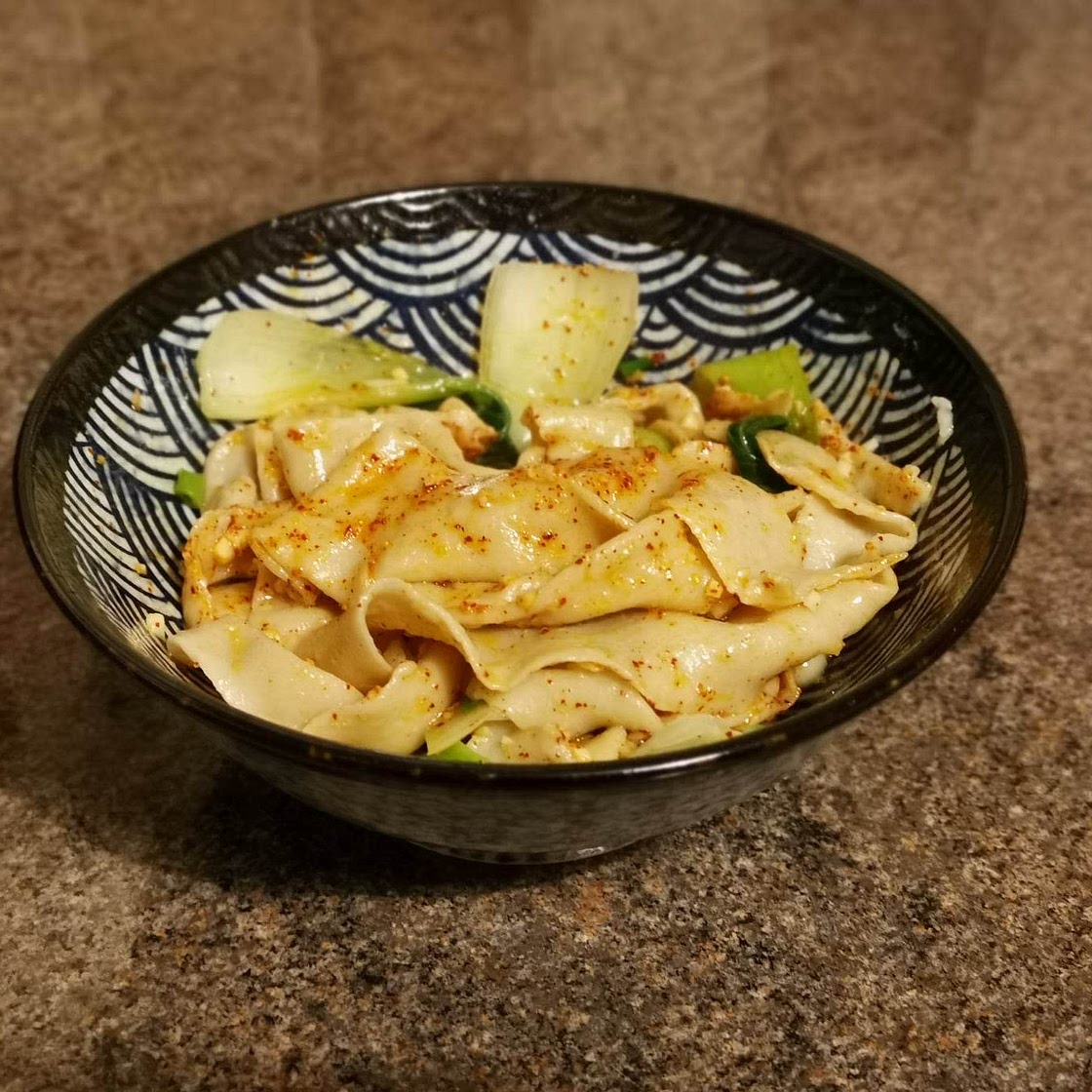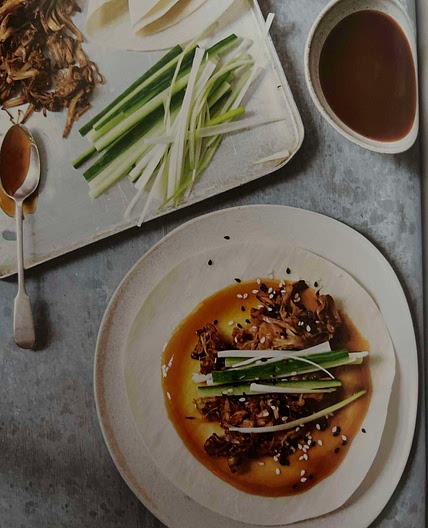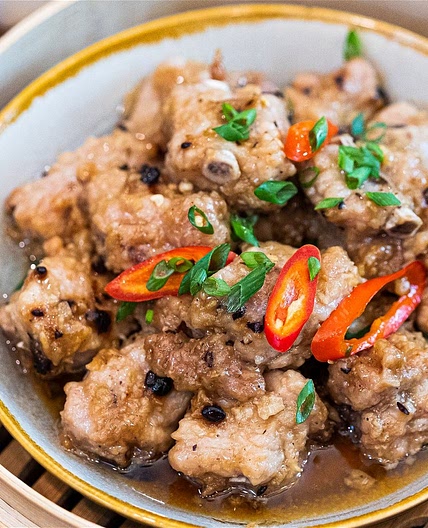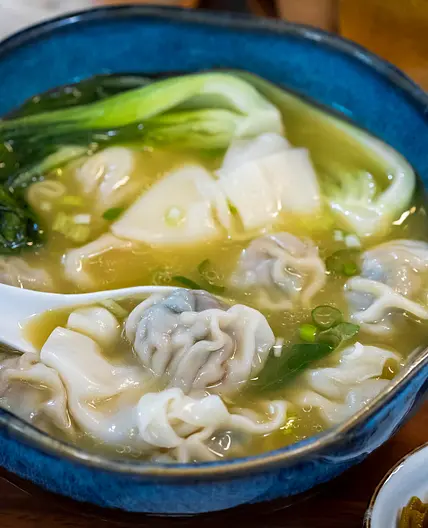By Callum Morris
Biang-Biang Noodles
17 steps
Prep:3h 45minCook:10min
Biang-Biang Noodles are named for the sound they make as they are hand stretched. This recipe uses the slower autolyse method to prepare the noodles, so prepare early for a quick dinner later on. It is key to use mass for the water used in the dough for precision, rather than volume by eye, and ensure the water is room temperature. Take care with the hot oil and enjoy!
Updated at: Thu, 17 Aug 2023 05:34:13 GMT
Nutrition balance score
Unbalanced
Glycemic Index
73
High
Glycemic Load
87
High
Nutrition per serving
Calories1237.7 kcal (62%)
Total Fat76.5 g (109%)
Carbs119.5 g (46%)
Sugars1.5 g (2%)
Protein18.3 g (37%)
Sodium1185.3 mg (59%)
Fiber5.2 g (19%)
% Daily Values based on a 2,000 calorie diet
Ingredients
2 servings
Instructions
Step 1
1. Mix the flour and salt in a bowl, then very slowly pour in the water, stirring the whole time to evenly distribute the water, until it comes together into a dough. It will look a little on the dry side once all the water has been added, but do not be tempted to add any more.
Step 2
2. Transfer to a work surface and knead for a few minutes, until the dough just comes together into a shaggy ball, there is no need to overwork the dough at this point; this is the autolyse, it allows the gluten to develop and gives a stretchier dough.
Step 3
3. Cover the dough with a damp tea towel for 20 minutes.
Step 4
4. After the dough has rested, knead again vigorously for 10 minutes, until it’s very smooth. It should by now have the consistency of Play-Doh; if you poke it, the indentation should remain, rather than spring back.
Step 5
5. The dough will likely have both a smooth and uneven side of the dough. Pinch the uneven side together. Push the dough around the work surface, letting the friction clean up that pinch. Push it around in a couple different directions, creating an entirely smooth ball of dough.
Step 6
6. Prepare a large plate or bowl and grease with the vegetable oil.
Step 7
7. Cut the dough into eight equal pieces (around 55g each), then repeat the process of step #5 to smooth out the cut sides. Then roll the pieces into sausages, roughly the length of your thumb and place into the greased plate, tossing them to evenly coat in oil.
Step 8
8. Cover with cling film and allow to rest for two to three hours.
Step 9
9. While the noodles rest, prepare your spices by first toasting them in a dry wok or pan. Then grind them into a fine powder. During this time, also prepare the spring onions, garlic, and pak choi.
Step 10
10. Once the dough pieces have rested, take a log and place horizontally onto a work surface. Flatten it out with a rolling pin into a rectangle, around 12cm long and 6cm wide. Using a chopstick, create an indent in the middle of the longest length of the flattened noodle - this will be your tear line later on. Repeat the process for the remaining noodle logs, allowing each rectangle to rest 10 minutes before continuing.
Step 11
11. Working with one piece at a time, take both ends of the dough rectangle between your thumb and fingers and start to pull very slowly, until you feel no more tension.
Step 12
12. Still holding both ends, slap the middle of the noodle down against the work surface around 5-10 times, gently pulling it more as you go, but try not to grip too hard as it can create tears. The noodle can lengthen up to one meter long, but stop if you feel it could break.
Step 13
13. Lower the stretched noodle onto the work surface, then using the indent you had made earlier, tear the noodle in half lengthways. Repeat steps 11-13 for the remaining dough pieces. To prevent the noodles sticking together as you prepare the others, you can lightly oil them.
Step 14
14. Meanwhile, bring a pot of lightly salted water to a boil, while also heating your groundnut oil in a separate pot.
Step 15
15. When your noodles are ready, cook them along with the prepared pak choi for 2 minutes, or until the noodles float.
Step 16

16. Drain the noodles and pak choi and distribute into two bowls, neatly pile the spring onion, garlic, and spice powder on top of each.
Step 17
17. Now carefully pour the hot oil onto the pile to cook the spices and garlic, then toss the noodles to evenly coat. Serve immediately.
Notes
0 liked
0 disliked
There are no notes yet. Be the first to share your experience!












